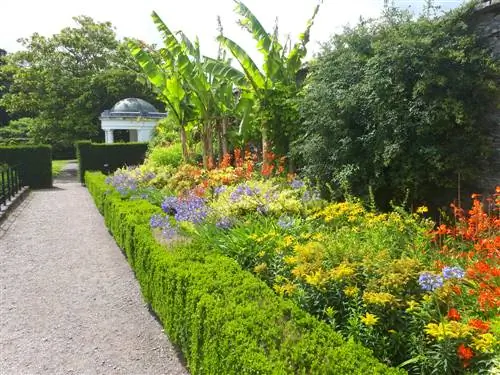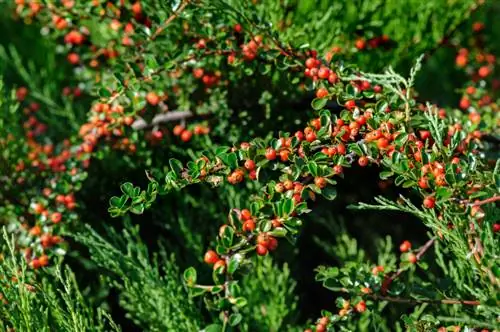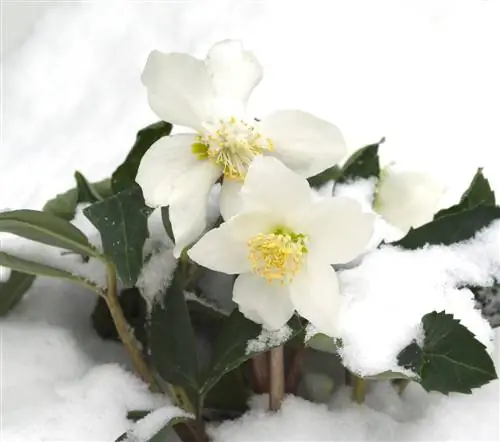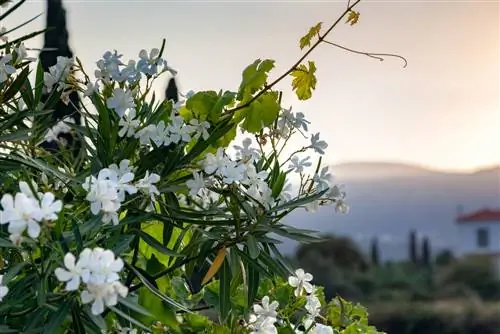- Author admin [email protected].
- Public 2023-12-16 16:46.
- Last modified 2025-01-23 11:21.
Bed borders give flower beds a frame and ensure an attractive structure of the green area. Bed borders made of wood, stone, metal or plastic are easy to care for, but in natural gardens they often have a visually disturbing effect. Plants are a natural boundary here.
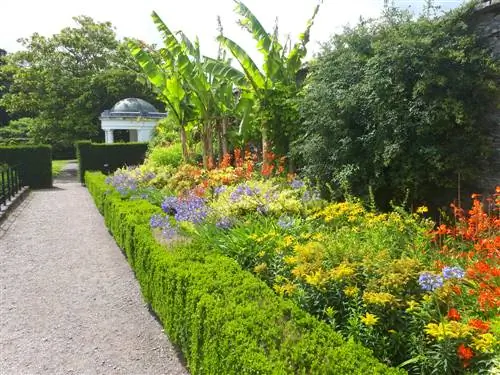
Which plants are suitable for bordering beds?
Plants such as boxwood, boar's rue, lavender, dwarf St. John's wort, hedge myrtle, dwarf privet, barberry, yew, spindle bush and Beg-Ilex are suitable as natural bed borders. These offer visual variety and can be cut to get the desired shape.
Classic small boxwood hedge
The evergreen boxwood has been popular as a border plant for hundreds of years. It is available in different growth forms and heights, so that you can tailor the small hedge perfectly to your individual circumstances.
Attractive herb hedges
But it doesn't always have to be boxwood. The cut-tolerant boar's rue, a relative of mugwort and wormwood, is absolutely frost-hardy and easy to care for. With its small, feathery leaves, it forms dense hedges up to 50 centimeters high. Like many Mediterranean herbs, the plant prefers warm, sunny locations and well-drained soil.
Fragrant lavender borders
Fragrant lavender is the classic companion of roses. What is less known is that this plant can be used to create beautiful borders:
- Always plant lavender in spring as it is more sensitive to frost. Survives well rooted. assuming a little winter protection, even lower temperatures.
- Choose a compact growing variety like “Blue Cushion”.
- Loosen the soil thoroughly and work in sand or grit.
- You can do without additional fertilization, lavender is very undemanding.
- The optimal planting distance is thirty centimeters.
The lavender bed border is cut in summer, after flowering. But only shorten the long flower shoots here. A light topiary is then carried out in early spring, before the plant sprouts.
Pretty border with dwarf St. John's wort
The shining stars of the dwarf St. John's wort make the natural bed border a visual highlight. You need five plants per linear meter. St. John's wort feels extremely comfortable in dry garden areas.
Robust alternatives to boxwood
The boxwood borer is very damaging to the evergreen boxwood in many regions. A variety of small trees with similar leaf and growth forms, which are also pruning-tolerant, offer attractive replacements. These are, for example:
| Plant | Features |
|---|---|
| Honeymyrtle | Evergreen, small-leaved shrub, very tolerant of pruning. |
| Dwarf privet | Ideal for flower bed borders. Also tolerates topiary cuts very well. |
| Box-leaved barberry | Grows compactly, tolerates cutting and remains rather small at 50 centimeters. |
| Yew | Slow growing, easy to shape. |
| Spindle bush | Evergreen and cut-resistant with very attractive foliage. |
| Beg-Ilex | Grows low and dense with non-thorny foliage. Evergreen. |
Tip
Soft-leaved perennials are also wonderful for bordering beds. Although these often move in during the winter months, they quickly sprout again in the spring and then form a dense border. Lady's mantle, elf flower, mint or sedum are the most popular here. But classic culinary herbs such as chives also form dense borders that can be visually extremely interesting.

